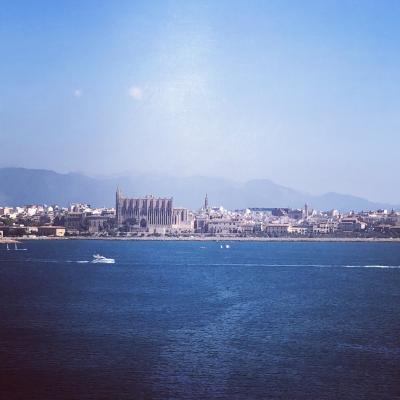How does the Gothic style of the Cathedral of Santa Maria of Palma influence the atmosphere of the surrounding area?
Similar Topics
gothic architecture palma
cathedral of santa
la seu palma
gothic rose window
palma de mallorca
medieval gothic style
cathedral waterfront
spiritual ambiance palma
The Cathedral of Santa Maria of Palma, commonly known as La Seu, is a magnificent example of Gothic architecture that profoundly shapes the atmosphere of the surrounding area in Palma de Mallorca. Its towering spires and intricate stonework create a dramatic skyline that immediately draws the eye, instilling a sense of awe and reverence. The cathedral’s soaring vertical lines and large stained-glass windows, particularly the impressive rose window, filter the light in a way that enhances the spiritual and contemplative ambiance both inside and in the nearby public spaces.
The presence of such an imposing Gothic structure lends the neighborhood a historic and timeless quality, anchoring it firmly in the medieval past while coexisting with modern urban life. The stone façade, weathered by centuries, exudes a quiet grandeur that invites visitors and locals alike to slow down and appreciate the craftsmanship and history embedded in the building. This sense of connection to history adds depth to the area, making it more than just a part of the city—it becomes a place of cultural significance and reflection.
Moreover, the cathedral’s location by the sea intensifies its atmospheric impact. The contrast between the delicate Gothic details and the vastness of the Mediterranean backdrop creates a unique harmony, blending natural beauty with architectural mastery. This setting amplifies the cathedral’s role as a landmark and focal point, encouraging leisurely strolls along the waterfront and fostering a peaceful, almost sacred, environment in its immediate vicinity. The Gothic style’s emphasis on light and height thus influences not only the physical space but also the emotional tone of the area, making it a captivating destination for visitors seeking both cultural enrichment and serene contemplation.
The presence of such an imposing Gothic structure lends the neighborhood a historic and timeless quality, anchoring it firmly in the medieval past while coexisting with modern urban life. The stone façade, weathered by centuries, exudes a quiet grandeur that invites visitors and locals alike to slow down and appreciate the craftsmanship and history embedded in the building. This sense of connection to history adds depth to the area, making it more than just a part of the city—it becomes a place of cultural significance and reflection.
Moreover, the cathedral’s location by the sea intensifies its atmospheric impact. The contrast between the delicate Gothic details and the vastness of the Mediterranean backdrop creates a unique harmony, blending natural beauty with architectural mastery. This setting amplifies the cathedral’s role as a landmark and focal point, encouraging leisurely strolls along the waterfront and fostering a peaceful, almost sacred, environment in its immediate vicinity. The Gothic style’s emphasis on light and height thus influences not only the physical space but also the emotional tone of the area, making it a captivating destination for visitors seeking both cultural enrichment and serene contemplation.
🧩 Related Questions
Related Question
How does the topography of Mallorca affect its natural attractions?
Related Question
How has Mallorca’s rural landscape been shaped by the history of almond cultivation?
Related Question
How did the Catholic Church support or regulate the lifestyle of hermits on Mallorca throughout its history?

